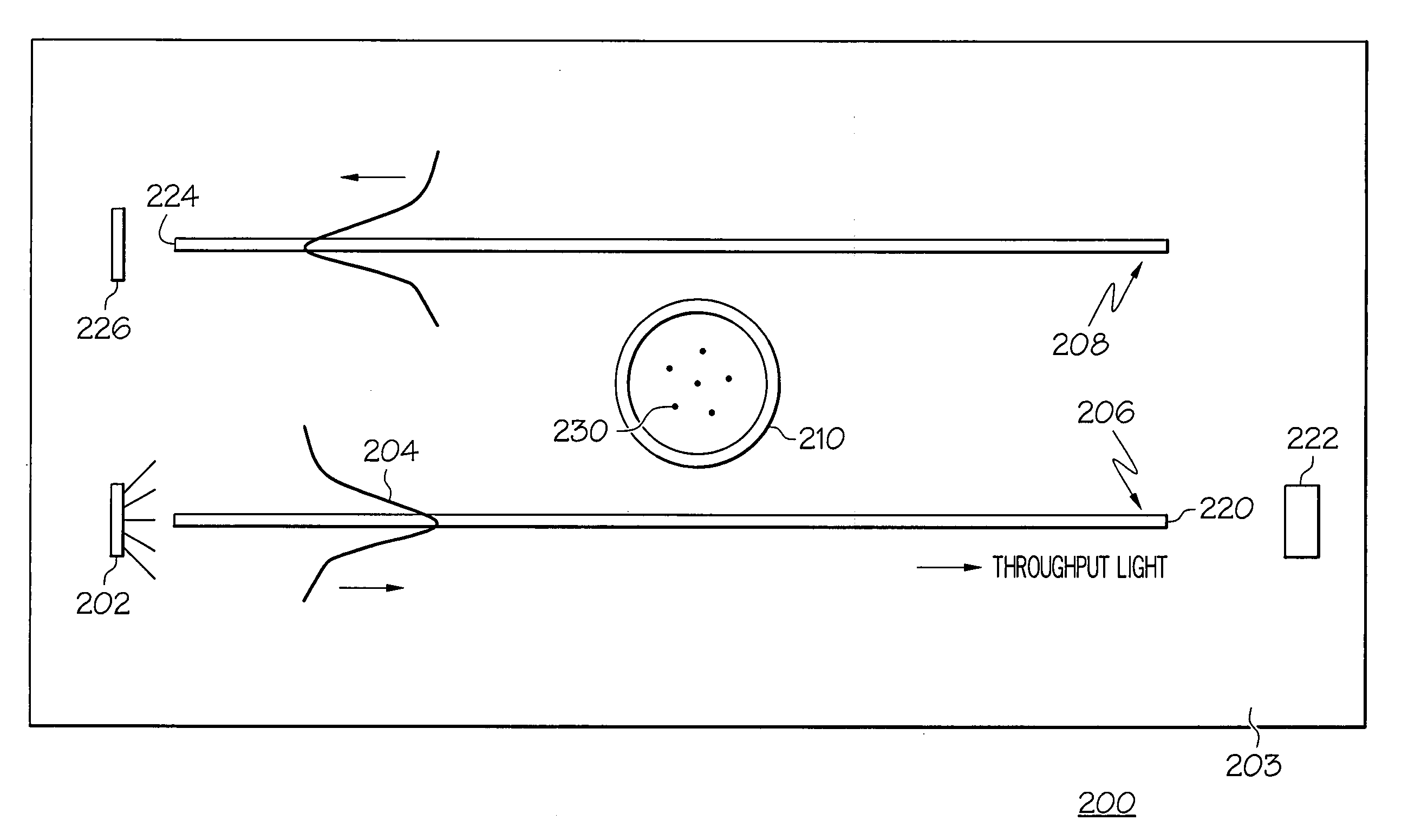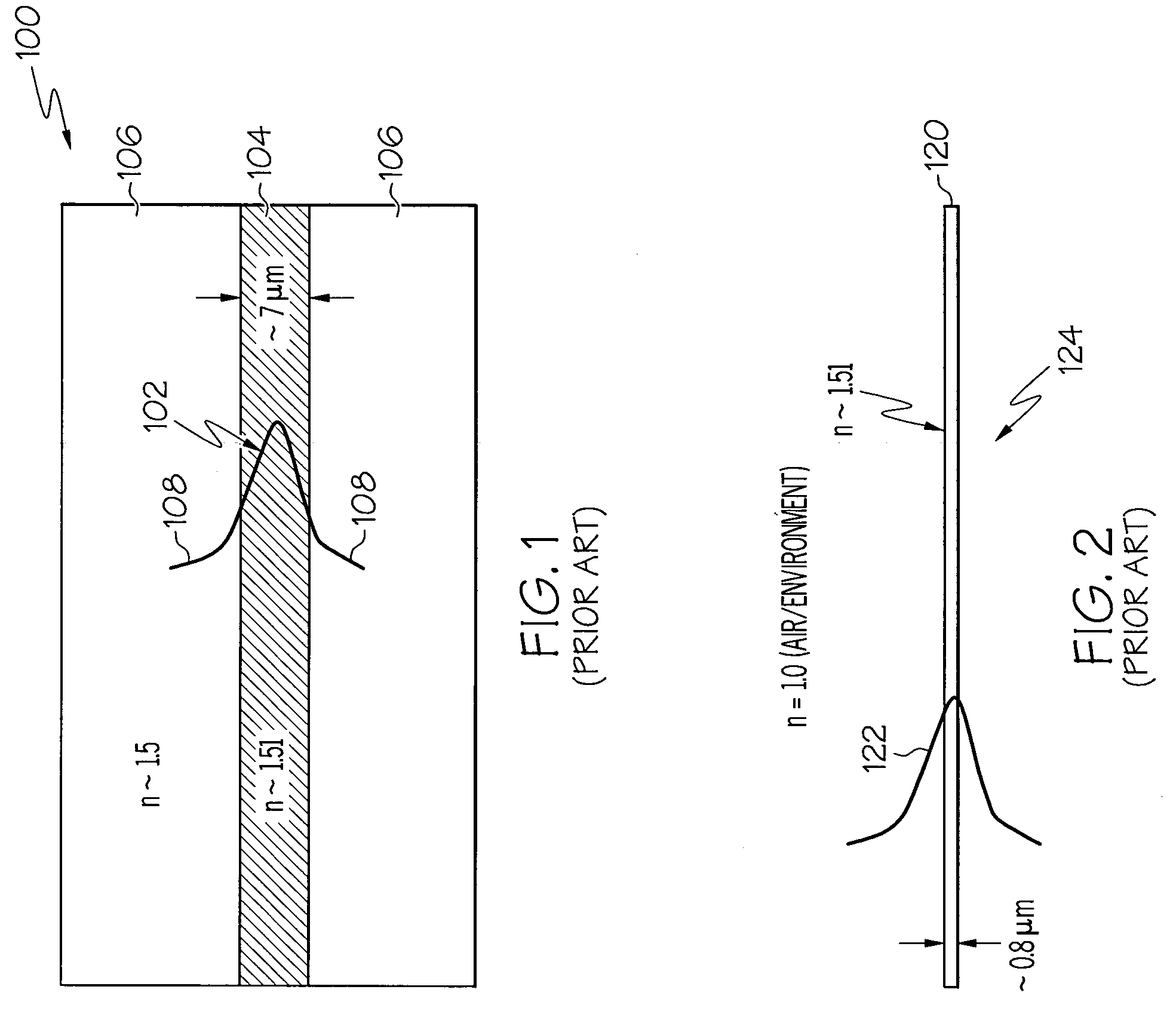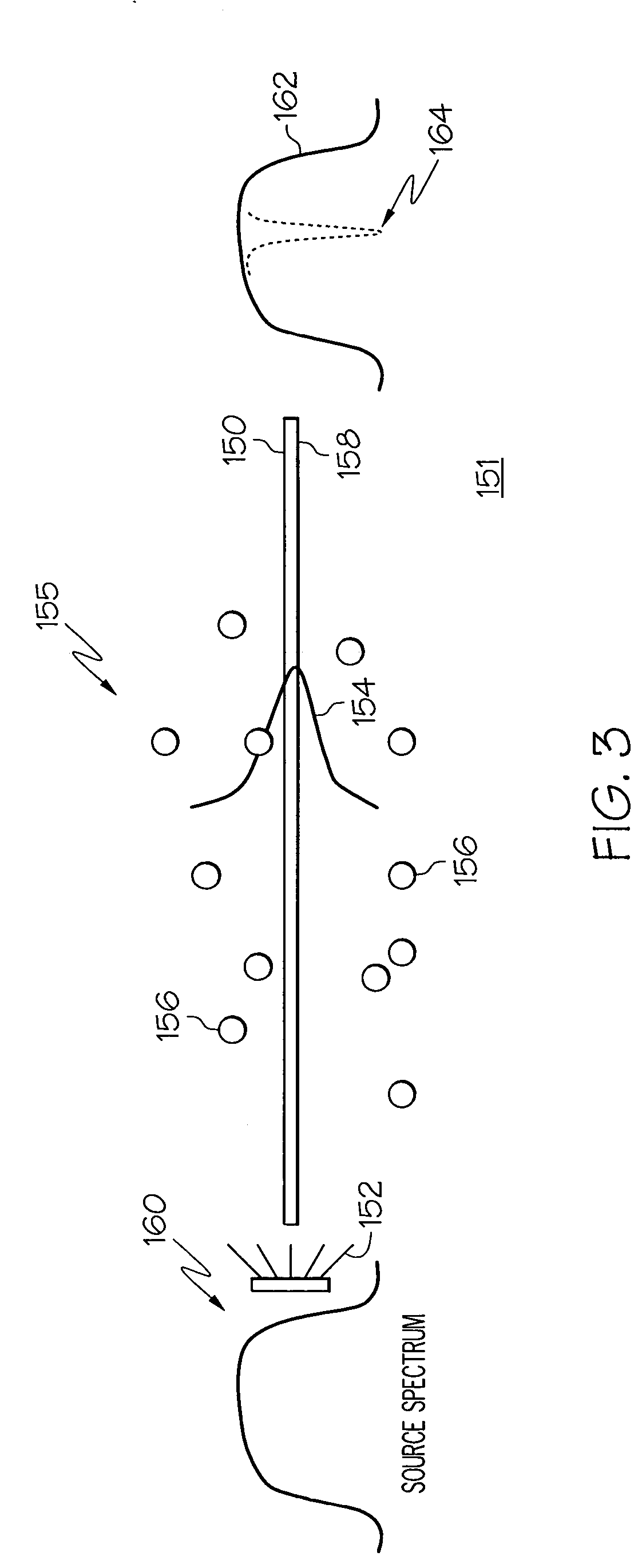Sensor using ultra thin waveguides and optical fibers
a technology of optical fibers and waveguides, applied in the field of sensors, can solve the problems of high cost of multi-gas optical sensor systems, inability to use conventional optical fibers for sensing sections without major modification, and toxins may become chemical agents. achieve the effect of high efficiency
- Summary
- Abstract
- Description
- Claims
- Application Information
AI Technical Summary
Benefits of technology
Problems solved by technology
Method used
Image
Examples
Embodiment Construction
[0021]The following detailed description of the invention is merely exemplary in nature and is not intended to limit the invention or the application and uses of the invention. Furthermore, there is no intention to be bound by any theory presented in the preceding background of the invention or the following detailed description of the invention.
[0022]Referring to the drawings, illustrated in FIG. 1 is a conventional optical fiber 100 having a lightwave 102 depicted as traveling there through. In conventional fibers, signal-to-noise limitations have presented a problem in that a lightwave 102 traveling within fiber 100 does not interact strongly with the environment in which optical fiber 100 resides. Conventional optical fiber 100 is comprised of a glass material and includes at a central portion thereof, a core region 104. Core region 104 is generally formed of a doped glass material having an index of refraction that is higher than an index of refraction of a glass material 106 s...
PUM
 Login to View More
Login to View More Abstract
Description
Claims
Application Information
 Login to View More
Login to View More - R&D
- Intellectual Property
- Life Sciences
- Materials
- Tech Scout
- Unparalleled Data Quality
- Higher Quality Content
- 60% Fewer Hallucinations
Browse by: Latest US Patents, China's latest patents, Technical Efficacy Thesaurus, Application Domain, Technology Topic, Popular Technical Reports.
© 2025 PatSnap. All rights reserved.Legal|Privacy policy|Modern Slavery Act Transparency Statement|Sitemap|About US| Contact US: help@patsnap.com



